What is an Auditory Drill, and How Do I Use It?
Hi, friends! This week, I'm going to share with you the most effective practice that I have used to help students solidify their sound-to-print knowledge. I have used this in every class that I have taught from PK-12th grade. It helps students map sounds to reliable letter correspondence.

The Process of the Auditory Drill
Building Fluency in Our Students
Hi, friends! I'm back this week chatting about a popular topic that I've been discussing with The Dyslexia Classroom Community over on Instagram. Many have reached out to me asking for strategies on building fluency. I asked the community if this is something that would be helpful, and the resounding answer was yes. In this post, I will be discussing what fluency is, how to build it, and providing you with resources to help. Reading fluency is essential to our students' success because research has found that developing it is one of the five pillars of reading instruction.
🤔 So, what is fluency?
Fluency is NOT the skill of reading fast! When we read fluently, we read words accurately and at a rate that allows proper expression, phrasing, and intonation. This ability to read well, or automatically, aids in deeper comprehension.
When students struggle to read fluently, reading comprehension can be affected. This happens because the reader exerts a great deal of cognitive energy and f...
Top Reason to Use an Explicit Instruction Model
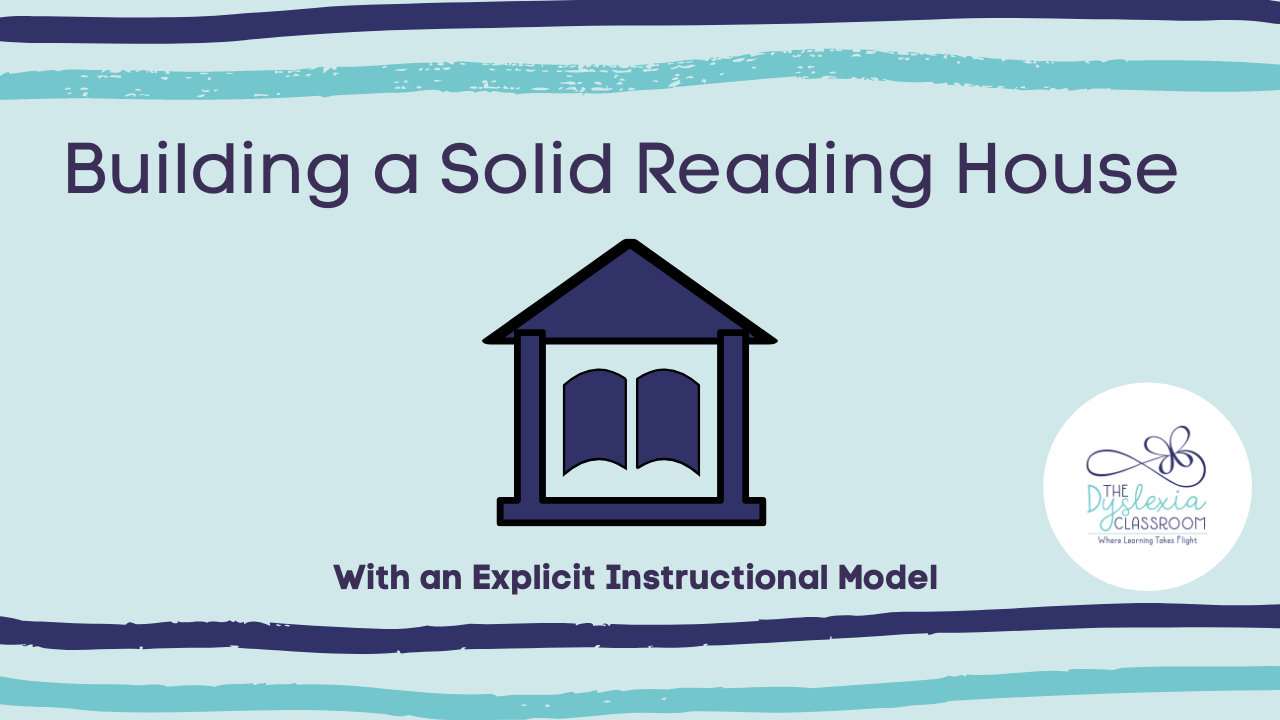
Hi, friends! I'm going to start this week's blog post off in a slightly different direction than usual. Don't worry, I've got some great tips to also share with you this week. 😊
If you are like me, you get inspiration from design feeds and head straight to Target to purchase all the pretties. Don't you always love an excuse to browse Target's newest home decor? 😉
What happens, though, is that I get home with all of my goodies, and I'm not really sure what to do next. Then, I realize that I wasn't fully prepared to start decorating.
Why? Well, because the foundational pieces in my home were not yet set or organized for me to even begin to think about decorating or taking a trip to Target. 😔 Did I mention that I have three little ones, three HUGE dogs, and a husband running around the house making it just a bit difficult to stay organized?
Anyway, what happens is that my pretty, new decor gets lost in the bigger picture of my home (or added to the pile of decor in my hall closet 😊...
Strategies for Teaching Continuous Blending
Hi, friends. This week, the blog post is going to be slightly different. I've included a short video that will help you with the subject matter I'm chatting about with you this week.
Have you thought about how you can help students that know individual sounds but can't seem to put them together? Or, if they put them together, they drop sounds when blending?
Teaching continuous blending is a great strategy to help students connect sounds with decoding. Students that struggle with holding individual speech sounds with their phonological memory benefit from this instruction. Next, let's talk a little about continuous blending.
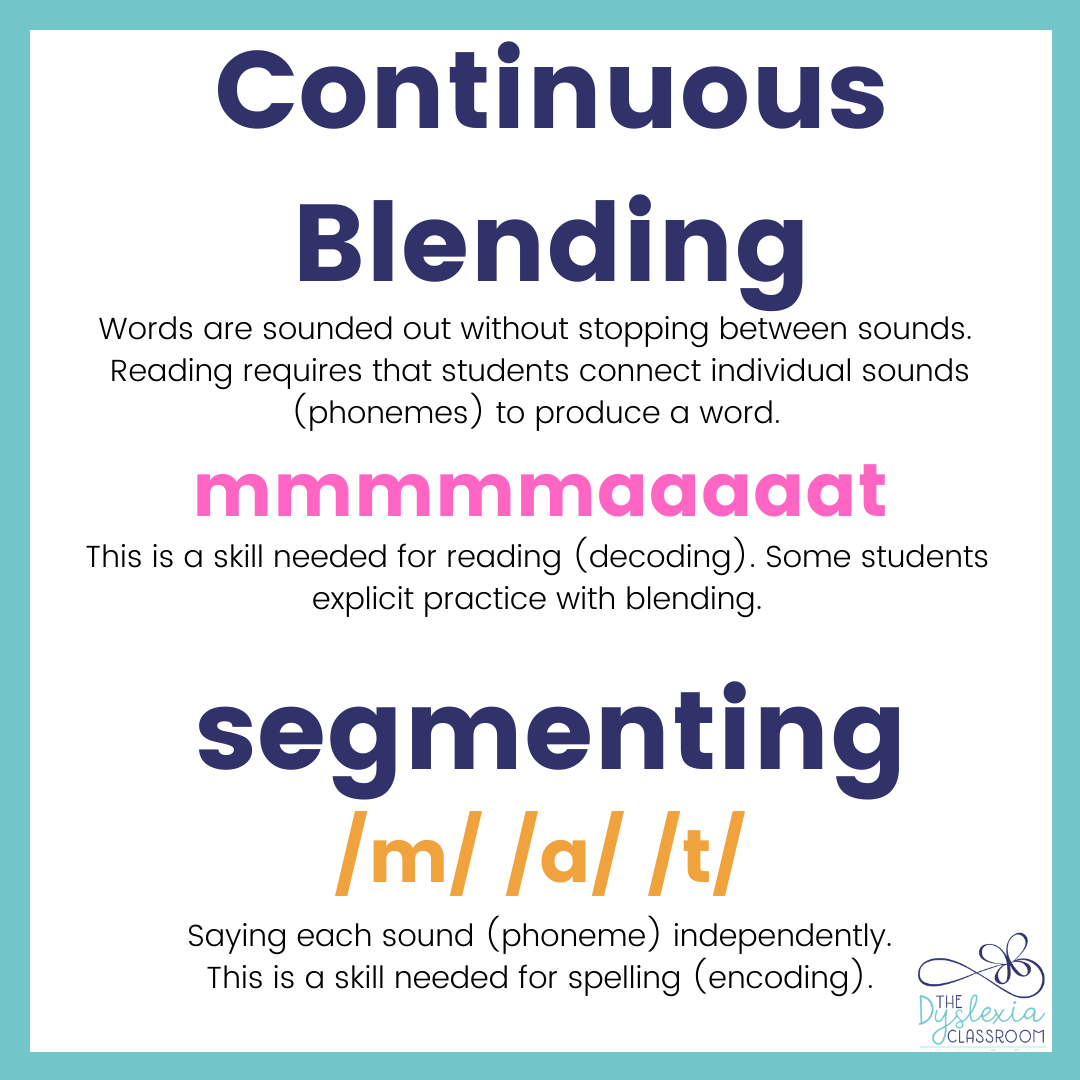
What is Continuous Blending?
Continuous blending is when words are sounded out without stopping between sounds. I model this in the video. Reading requires that students connect individual sounds (phonemes) to produce a word.
Why is this important? This is a skill needed for reading (decoding). You may find that some students need explicit practice with bl...
Creating a Dyslexia-Friendly Learning Environment

Hi, friends! This week is Teacher Appreciation Week, and today, I want to show my appreciation by having a sale on my teaching resources. In my teacher shop, I have dyslexia resources, printable letter tiles, blending boards, intervention resources, and more. Visit my resource shop to save today on tools to effectively support students with dyslexia. Click here to see the sale. I also have a free download that will add additional support in your classroom. Keep reading for how to access it.
Though Teacher Appreciation Week comes once a year, it doesn't mean that they don't deserve appreciation all year long. Teachers work incredibly hard at creating welcoming environments for their students. We spend countless hours preparing the learning environment so that our students feel that they belong. Classrooms set the stage for learning. Students with learning differences should feel seen, understood, and represented in their learning environments.
A dyslexia-friendly learning environment...
Bringing Reading Automaticity into Your Reading Lessons

Hi friends! This week I am going to chat about automaticity, how to build it in word reading with our students, and tips and activities to support this learning.
What is Automaticity?
Automaticity is defined as fast, accurate, and effortless word identification at the single-word level. Although fluency involves reading words with automaticity and prosody at the phrase, sentence, and text level, accurate and automatic reading is needed to be a fluent reader.
It is the part of fluency practice where we focus on accurate and speedy word recognition. For this reason, words are read in isolation. This is only one part of fluency instruction, but is often an area where dyslexic and struggling readers need additional practice.
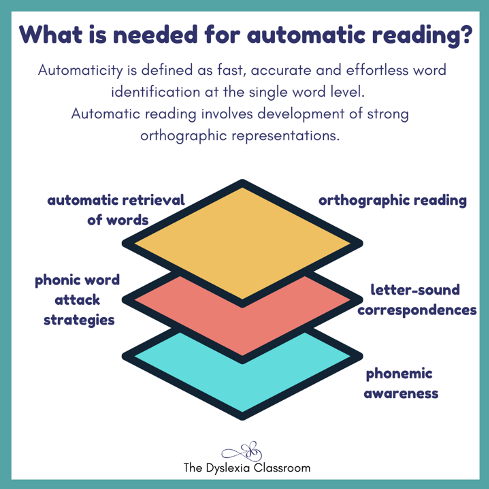
Students with dyslexia struggle with accurate and automatic reading at the word level. Automatic reading involves developing solid linkages between sounds and their letter representations, leading to fast and accurate retrieval and transfer of this letter-soun...
Why We Need to Say Dyslexia in Every Single Classroom

For those students with a language-based learning disability such as dyslexia, the knowledge, understanding, and approach of a classroom teacher can make all the difference in the world. When we talk about dyslexia and education, our primary focus is on addressing reading difficulties. Providing the appropriate instruction is essential for our dyslexic learners. However, we can't stop here.
The impacts of dyslexia are far-reaching. Dyslexia can impact academics, self-esteem, and beyond. We need to have a deeper understanding of dyslexia to see how it can impact all curriculum and social-emotional areas.

Each of these areas deserves its own blog, but today the focus will be on how dyslexia connects to academic areas within our schools. Dyslexia is a language-based learning difference, and many of our children will have difficulties in areas beyond reading class.
Looking at Reading Beyond Language Arts
Students with dyslexia have difficulty with accurate and/or fluent word recogni...
Teaching Sight Words by Mapping Speech to Print
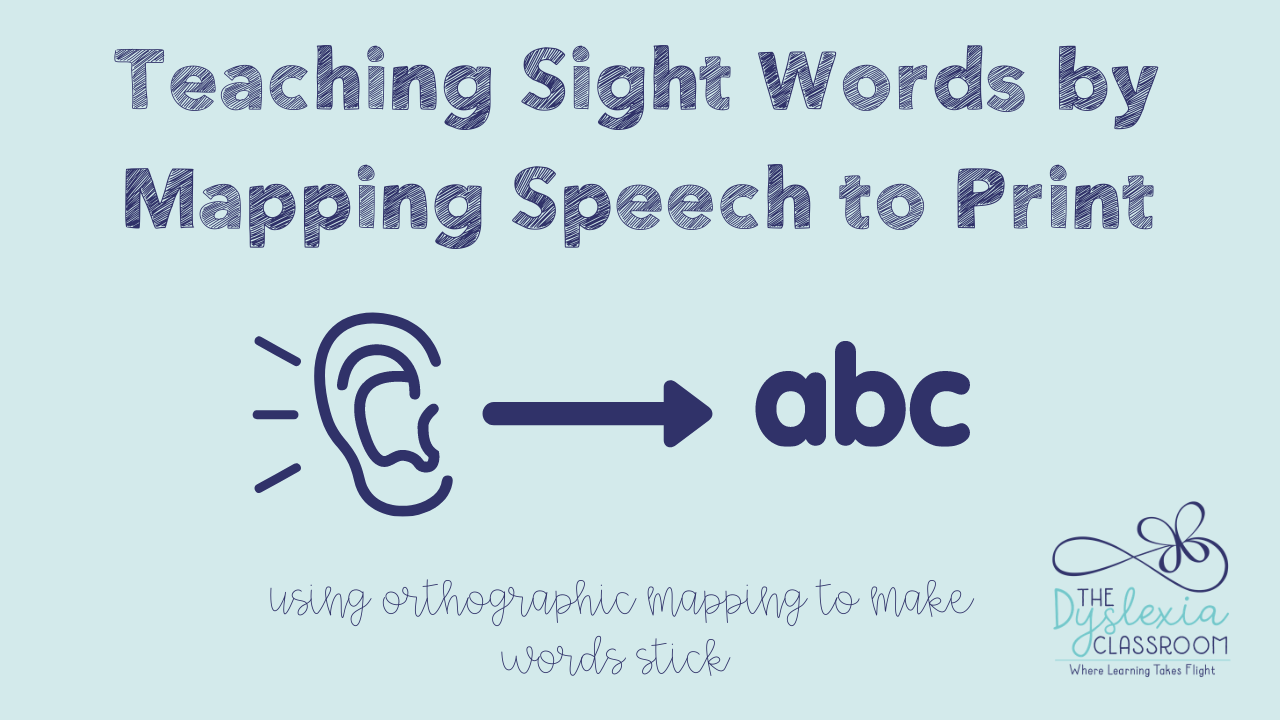
In the education field, the term sight word is used to represent many different things based on who is talking and their training and pedagogy. For some, sight words are synonyms for high-frequency words. For others, it refers to words that they consider irregular or rule breakers and are considered words to memorize. Then there are those who refer to sight words as any word that is read automatically. I fall into the latter category and refer to sight words as instant words or words that we know by sight.
I first began my teaching journey well over two decades ago. At that time, my college peers and I were taught to teach our students to memorize sight words. We also explained to our students that English spellings were unpredictable.
I then transferred to a school that used Siegfried Engelmann's Direct Instruction which directed that all words, regardless of irregular spelling and pronunciation, were sounded out. This was my first introduction to helping students connect the soun...
The Rhythm of English and Its Impact on Instruction

Hi friends,
Have you thought about stressed and unstressed syllables in the English language?
Does it really matter if we teach this concept to struggling readers?
The English language is a stress-timed language. When we speak or read fluently, there is a natural rhythm that occurs. This aids in comprehension, pronunciation, syntax, and expression. The stressed and unstressed syllables and words in English give it its rhythm. This musicality of English, the ups and downs, the connected speech, and the linking of words, which changes when placed in running speech, aids in our understanding and being understood.
The Impact
Before my therapist training, I had never thought about the impact that stressed and unstressed syllables have on spelling, pronunciation, syntax, and meaning. I honestly didn't know that the English language is a stressed-time language or what that meant for instruction. Now, I clearly see that by explicitly teaching the concept of stressed and unstressed sylla...
Join Us for a Literacy Event!
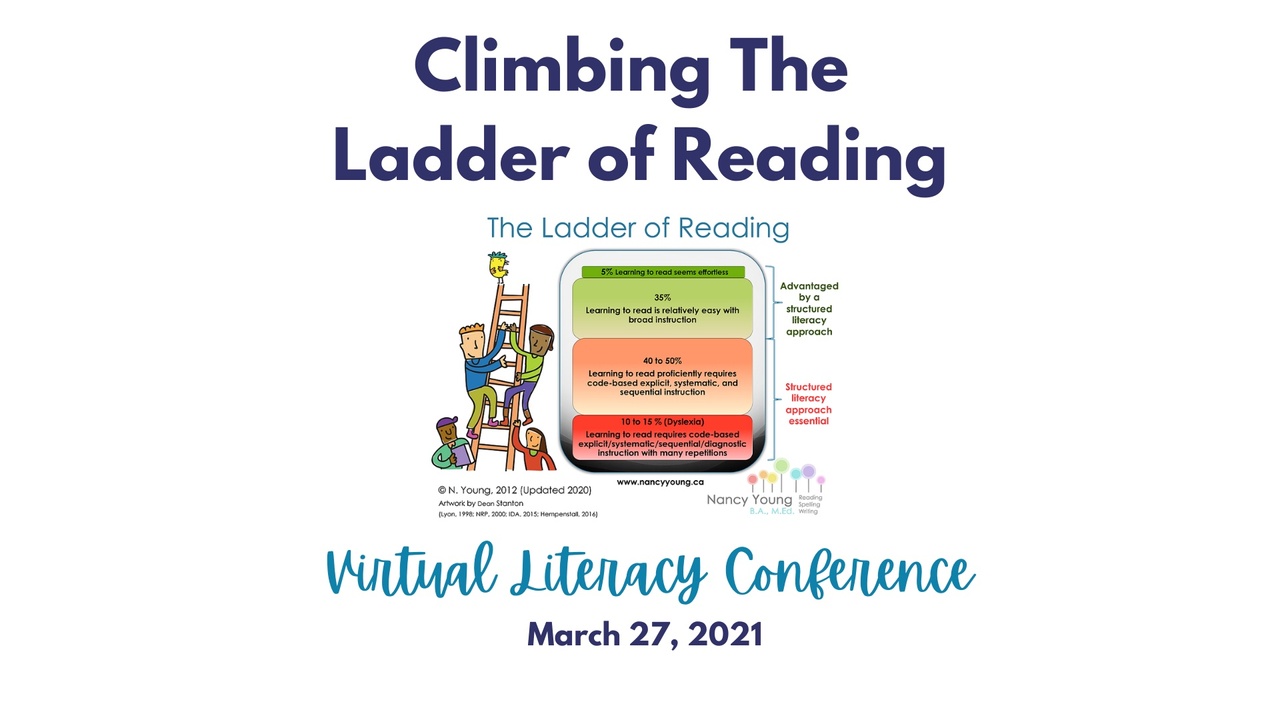
This Saturday, the Climbing the Ladder of Reading Conference will be held virtually. This event will showcase professionals who will share their expertise on meeting the needs of 2e students, dyslexia awareness, science of reading in the general classroom, online instruction, meeting social-emotional needs, movement strategies, bridging word study and OG, and interactive and engaging therapy and lesson ideas. I've had quite a few people ask me if this conference is for them. This week on the blog, I am providing an overview of the conference and its presenters to help those who are wavering on whether to attend the live event.
First, I want to briefly touch on who this conference is for. The information that will be presented will be helpful for general classroom teachers, special education teachers, Gifted and Talented teachers, reading and literacy specialists, CALT/CALPs, administrators, and parents. The trainings will be useful and relevant for those just starting to understand th...



